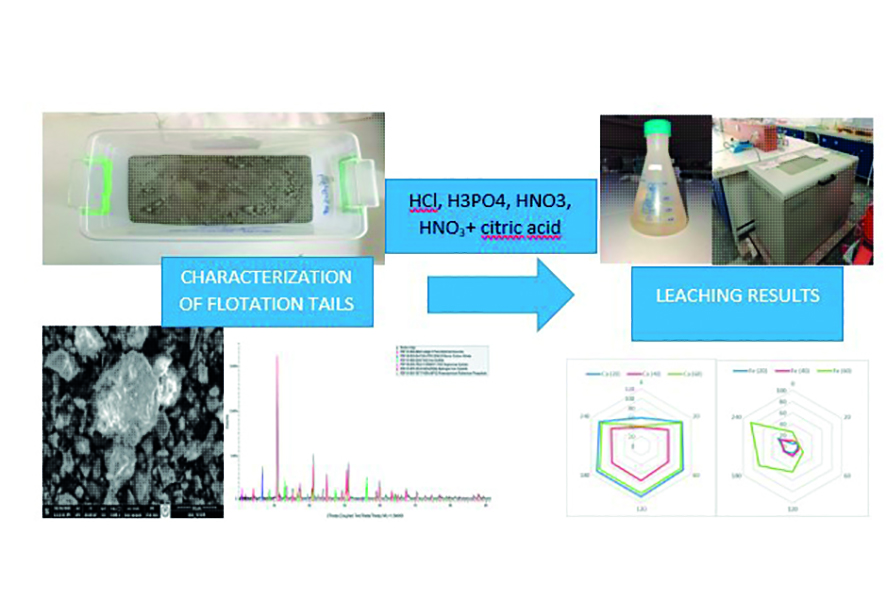Comparison of Different Leaching Media on Calcium, Iron, Magnesium and Manganese Removal from Flotation Tails
Leaching of Mining Sludge
DOI:
https://doi.org/10.13133/2239-1002/17897Abstract
Intense mining activities involving different mining sectors are operated in worldwide and a large amount of waste is generated. In addition to the problems caused by the accumulation of these wastes, environmental problems arise due to the metal content of the wastes. Leaching studies was one of the methods applied to evaluate elements. The main factor in the selection of the reactants used in the leaching studies is to improve the removal efficiency of the elements. In this study, HCl, HNO3, H3PO4 and HNO3 with 2 g/L citric acid was used to leach calcium (Ca), iron (Fe), magnesium (Mg) and manganese (Mn) elements from the flotation tails. While effective leaching yields for Ca, Mg, and Mn elements could be obtained with all inorganic acids tested, the removal of the Fe element was limited. However, studies with HNO3 and citric acid yielded important results regarding Fe removal. As a result of the leaching studies, optimum leaching condition was determined as 240 minutes of reaction time at 60 °C, 2 M HNO3 with 2 g/L citric acid. The leaching efficiency of Fe element was 11.97% at 20 °C, 13.48% at 40 °C, 45% at 60 °C at a concentration of 1 M HNO3 with 2 g/L citric acid. Ca, Mg and Mn elements removal was about 80-100% at all tested conditions with HNO3 and 2 g/L citric acid. These results show that the types of reagents, experimental conditions, and also waste type was important to determine best leaching conditions.

Downloads
Published
Issue
Section
License
Copyright (c) 2022 Periodico di Mineralogia

This work is licensed under a Creative Commons Attribution 4.0 International License.

